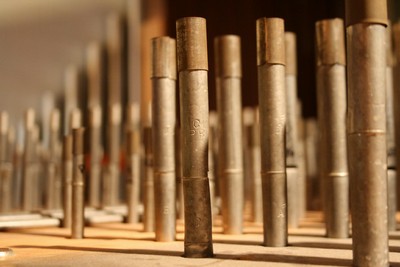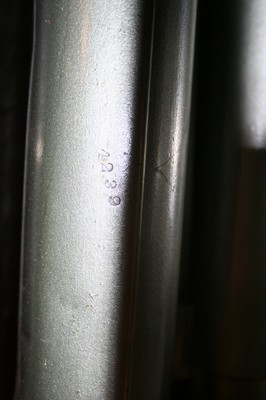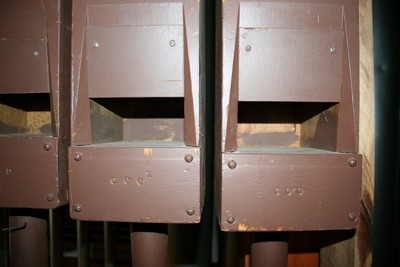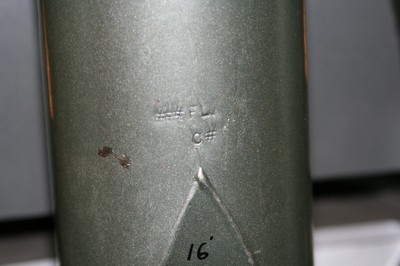 |
The pipes of the Great
Division are located primarily in two locations in the organ. Here we
see several ranks from the Great. From left to right ranks are the
IV Mixture 1-1/3', 2' Super Octave, 4' Octave, 8' Spillflöte
(pipes with red felt), 4' Gedeckt, and II Sesquialtera. |
 |
On the back side of
the pipes shown above is the 1-1/3' Mixture IV. Mixtures add
brilliance to the overall
sound of the organ. A few pipes from the Mixture rank have been pulled
and can be seen in the background on the right side. |
 |
Here we see the
smallest pipe
of the 4' Octave rank. The pitch "C" is stamped on the pipe. "PR"
likely stands for "Principal" and is another name for the Octave rank. |

|
This is a view from
the
opposite side of the pipes as shown in the top photo above. Again ranks
from left to right are II Sesquialtera, 4' Gedeckt, 8'
Spillflöte
(red stripes), 4' Octave, 2' Super Octave, 1-1/3' Mixture IV.
|
 |
A
closer look at the largest pipe of the 4' Gedeckt rank reveals the
number 4239 stamped in the pipe. The Delaware Organ Company often
reused ranks of pipes from other organs, thus it is possible that this
is the opus number or job number from another instrument. |
 |
Behind the racks of
pipes of
the Great Division are these wood pipes, also of the Great. These are
of the 16' Lieblichflöte rank. The pipes have stoppers on top
thus making the 8' long pipe speak at the 16' pitch. This rank of pipes
also has a stop tab in the Pedal Division.
|
 |
Here's a closer look
at the largest two pipes in the 16'
Lieblichflöte rank. Note that "X" is used to represent
"sharp" instead of the normal musical notation of "#".
|
 |
Continuing around the
platform on the far right side are these two rows of pipes. In front
are more pipes from the 16'
Lieblichflöte rank, and in the back with the red stripes are
pipes of the 8' Spillflöte rank. |
 |
A close up of the C#
pipe of the 16' Lieblichflöte
rank reveals that the pipe builder noted that this pipe is really,
really, really
sharp. |